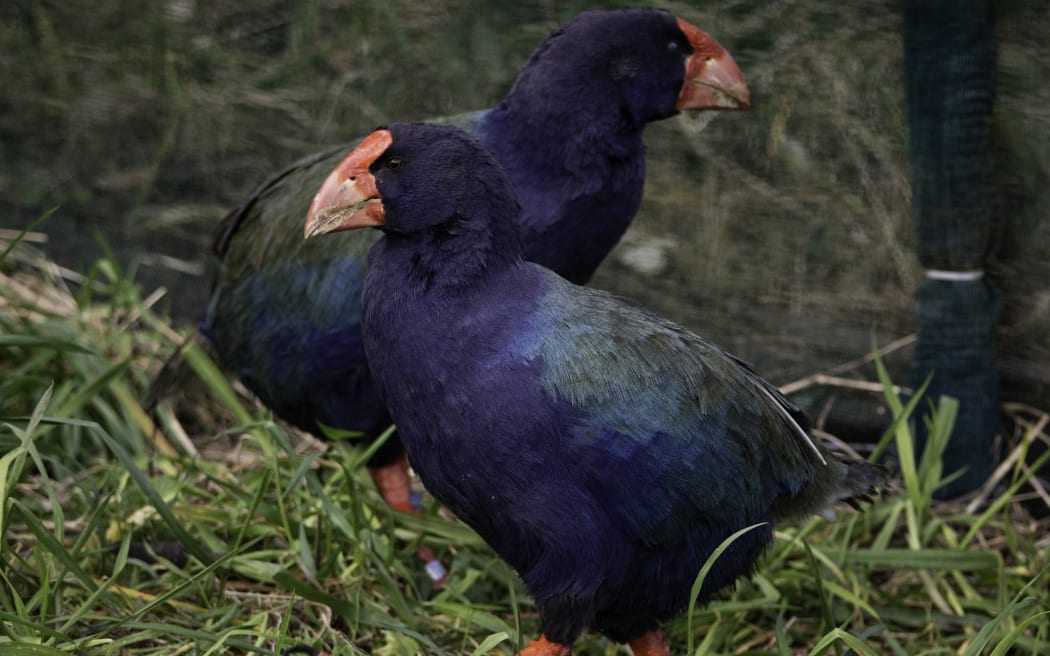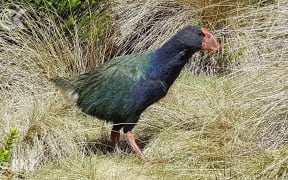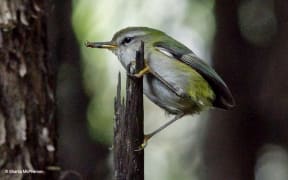A new pair of takahē have been released into Wellington's predator free bird sanctuary.
Three-year-old female Waitaa and six-year-old male Bendigo join two takahē already living in Zealandia Te Māra a Tāne, meaning there is now double the chance of visitors seeing the endangered birds.
The two young takahē will live in a pen near the sanctuary's perimeter fence to settle in before they are let out to roam in a few days time.
Waitaa and Bendigo arrived by plane from the Burwood Takahē Breeding Centre in Te Anau.
Sanctuary volunteer Scott Langdale said it was an incredibly exciting time.
"This part of Zealandia is not as frequented by visitors, so it's going to be neat for people on both sides of the fence to bump into takahē cruising around.
"You'll be able to see them from outside of Zealandia looking in as well."
As of November last year, there were only 484 takahē left in the world and it was very rare to see them in the wild, he said.
"We often have tourists here say, 'I saw a takahē on the roadside near Rotorua', but we tell them no that was a pukeko."

Waitaa and Bendigo have come from the Burwood Takahē Breeding Centre in Te Anau. Photo: RNZ / Angus Dreaver
Takahē are vulnerable to stoats, weasels, cats and dogs, which means they need to breed in predator free areas.
But that is easier said than done.
"Predator free areas in New Zealand are limited so even with that number of takahē, we're actually running out of space for them to live safely.
"Takahē are also defensive about their territory and they've got some really decent claws on them so they'll jump and fight any threat like a velociraptor," Scott said.
That is why Waitaa and infertile Bendigo have moved into Zealandia, to free up prime breeding habitat in Te Anau for another pair that can have chicks.
The birds arrived at the pen in two big wooden boxes.
When they were released, the two big, blue and green feathered manu with a large red beaks and powerful red feet rushed out.
As mana whenua performed a mihi, Waitaa and Bendigo stalked up and down the fence line checking out their new pond, food and sleeping shelter.
Zealandia's conservation and restoration manager Jo Ledington said although the pair could not breed they were important advocates for the sanctuary.
"We're a great advocacy site because we have about 140,000 visitors to Zealandia annually and two good patches of takahē habitat for two pairs of birds to live."

The release of the two birds means visitors to Zealandia will have double the chance of sighting a takahē. Photo: RNZ / Angus Dreaver
She said the success of takahē conservation came down to strong partnerships.
"We're really lucky to have amazing mana whenua partners in Taranaki Whānui and Ngāti Toa.
"We also had Ngāi Tahu representatives here to release the birds and without Takahē Recovery as well, none of this would be possible.
"It takes us all."
Waitaa and Bendigo will live on back country style tracks in the upper valley of Zealandia past the dam.
They will be getting the best care possible to ensure they thrive in their new home.




